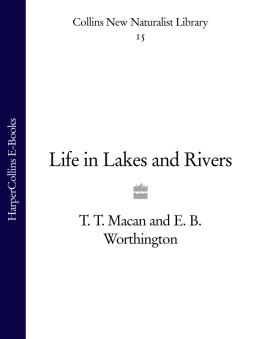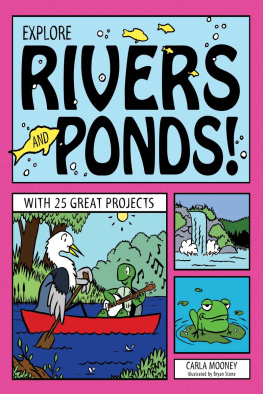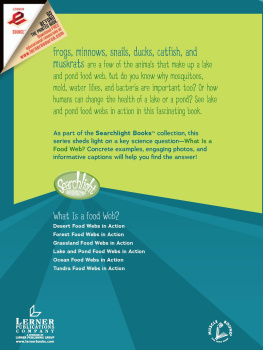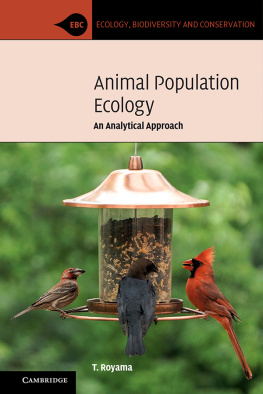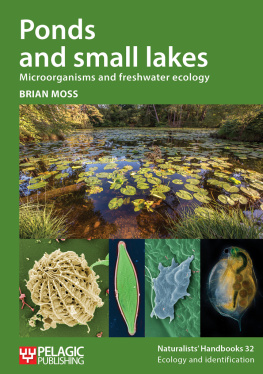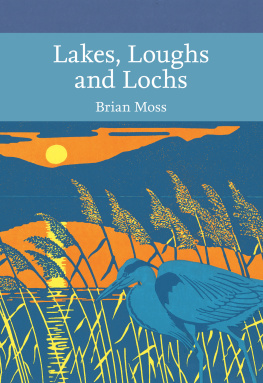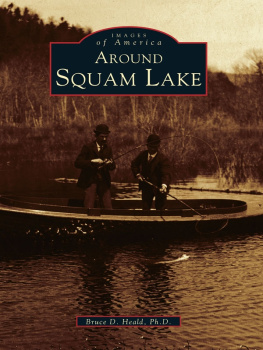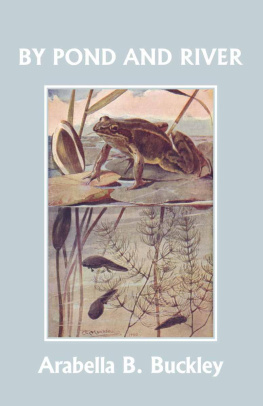

Margaret Davies D.Sc.
Sir Julian Huxley M.A. D.Sc. F.R.S.
John Gilmour M.A. V.M.H.
Kenneth Mellanby C.B.E. Sc.D.
PHOTOGRAPHIC EDITOR:
Eric Hosking F.R.P.S.
The aim of this series is to interest the general reader in the wild life of Britain by recapturing the inquiring spirit of the old naturalists. The Editors believe that the natural pride of the British public in the native fauna and flora, to which must be added concern for their conservation, is best fostered by maintaining a high standard of accuracy combined with clarity of exposition in presenting the results of modern scientific research.

Dr Macan and Dr Worthington, the collaborators in this scholarly and interesting book, have been colleagues for many years. Both are connected with the Fresh-water Biological Associations laboratory on Windermere in the English lakes.
The subject of life in British lakes and rivers occurred to the Editorial Board early in the planning of the New Naturalist series. No sooner had the idea come to us than we invited Dr E. B. Worthington to be the author of the book. Shortly after he had accepted the invitation, however, he left Windermere to take up an important appointment in East Africa. He suggested, when this happened, that the major task of the book should be taken over by his younger colleague, Dr Macan, and that the final work should be a collaboration of the two of them. The happy result of this suggestion is now before the reader, who will agree that Dr Macan and Dr Worthington have written an admirably lucid and vital book on a somewhat neglected subject.
One of the points made by teachers of ecology in the last twenty years to their students is that the animal and plant community can be readily studied in a pond or a lake. That this is so the authors of this book, which is entirely ecological in its outlook, make quite clear. Moreover, in so far as it can be made simple they make it so. Nevertheless the reader, when he has finished the book, will realize that the solutions of many problems of life in lakes and rivers (solutions which have been often arrived at by workers at Windermere) have only served to create more problems problems wider and more fundamental than perhaps anybody ever suspected, problems that reach far into the very structure of biology.
First appointed in 1935, Dr Macan returned to Windermere in 1946 after five years as specialist entomologist in the Army. Dr Worthington, well known on account of his explorations of the African lakes, came to Wray Castle as Director in 1937, when that post was first created. Since 1946 he has been Scientific Secretary to the East Africa High Commission, in which position he has been surveying all East Africa in order to ascertain how and where the resources of science might be used to promote prosperity and well-being.
THE EDITORS

It is becoming increasingly difficult to write a book which is not out of date in a number of minor, and perhaps a few major, particulars, because advances in every field are continually appearing in print and no-one can hope to keep abreast of all of them. The present authors do not venture to hope that they have not erred, but they have been in what are undoubtedly the most favourable circumstances for writing a book of this kind. Members of the staff of a freshwater biological station, they have been surrounded by colleagues each an expert in one of the fields touched in the following pages. Moreover, these colleagues have been willing to read through chapters on their subjects and draw attention to errors and defects. Mr H. C. Gilson has read chapters 1, 2, and 4; Dr C. H. Mortimer chapters 2, 4, and 9; Dr J. W. G. Lund and Dr Hilda Canter have assisted with the botanical parts of several chapters; Dr W. E. Frost has read chapters 11 and 12; Mr E. D. Le Cren chapters 12 and 13; and Dr C. B. Taylor chapters 14 and 15. Captain C. Diver, C.B.E., Director of the Biological Service, and Mr F. T. K. Pentelow of the Ministry of Agriculture and Fisheries have criticized chapters 8 and 14 respectively. It is appropriate to acknowledge at this point that the editorial board has made many helpful suggestions.
No less important is a lay impression, since it is not for specialists and professional biologists that this book is primarily written. For this we are indebted to Mrs Zaida Macan, who has read through the whole typescript; and to Mr Maurice Illingworth, who has read Chapter 12.
We record all this kindness with gratitude and take the opportunity to thank those who have helped us.

It is interesting to speculate on the contents of an Atlantic Charter drawn up by any species of animal other than man. We may start by comparing the lot of man with that of the rest of the animal kingdom, which is separated by a lower grade of intelligence. People are not often drowned as a result of catastrophic floods, few are blown to destruction by strong winds, and death in a forest or heath fire is a rare calamity; nor do abnormal spells of hot or cold weather claim many victims. The same is true for all large animals. But for innumerable small ones such dangers are great, and the populations of many are seriously depleted at intervals by one or other of these causes. A final calamity, which does not often befall man, though it befalls other animals of all sizes, is death at the hands of some beast of prey.
Medical science has rendered the more advanced sections of the community secure against many of the disease-causing parasites which formerly destroyed them in large numbers; plague (the black death), typhus (gaol-fever), and cholera may be mentioned as diseases that once took a heavy toll of life in the British Isles, but do so no longer. In less advanced parts of the world, disease still brings death to enormous numbers of human beings, and in this respect there is not so much difference between man and the other animals. Indeed on theoretical grounds it can be argued that many other animals are better off than man. Most parasites can survive only in living tissue and therefore it is to their advantage that the host should remain not only alive but unhandicapped in the struggle for existence. Too virulent a strain will be as unsuccessful as the one that is not aggressive enough to gain a foothold in the face of the counter-measures taken by the host. There is continual selection of a strain that can establish itself but will not kill. Selection acts on the host too and specimens lacking resistance to a particular parasite are removed at an early age. The result is a state of tolerance, with the host carrying parasites but not inconvenienced by them. This state is not attained by man for two reasons. First, selection of resistant individuals does not take place because medicine prevents it. Secondly, whereas the total population of most animals is separated into numerous units between which there is little interchange, man travels all over the world and carries strains of parasites from a region where tolerance has developed to one where it has not.
Next page
